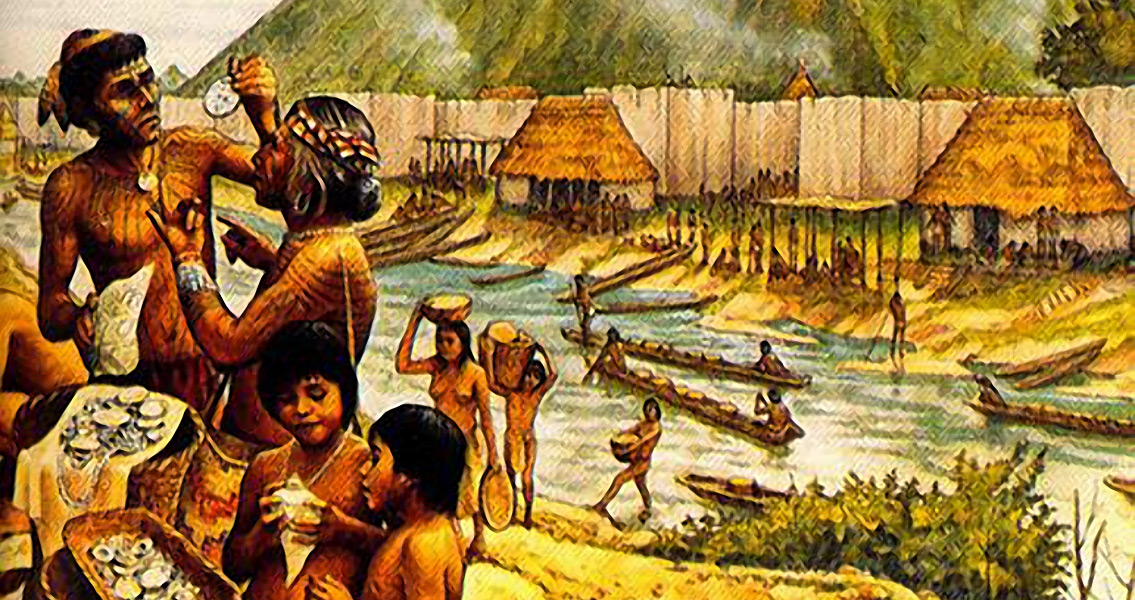<![CDATA[The fate of the people of Cahokia is one of the most enduring mysteries of North American history. Now, a a team of scientists from the Illinois State Archaeological Survey have come up with a new hypothesis for the disappearance of this mysterious pre-Colombian culture, arguing that conflicts which arose as a consequence of massive immigration to the city ultimately tore it apart. Cahokia was North America's first city, for hundred's of years the largest polity in the Americas north of Mexico. The first settlement in the area took place around 700 CE, the location proving so prosperous due to its proximity to three major rivers: the Missouri, the Mississippi and the Illinois. A paucity of evidence means little is known for sure about this culture, even the name Cahokia is misleading, coming from a tribe of Illini Native Americans who didn't reach the area until 1700 CE. At the peak of its existence, around the eleventh century CE, the city had a population of up to 20,000 people. The last physical monuments of the people who lived there are the Cahokia Mounds, remarkable feats of engineering with the largest; Monks Mound, covering over five hectares and standing thirty metres high. By 1500 CE the city had been completely abandoned, with scientists, historians and archaeologists still at a loss as to explain exactly what happened to the missing civilisation. Dr. Thomas E. Emerson and Dr. Kristin M. Hedman, authors of new research entitled, 'The Dangers of Diversity: The Consolidation and Dissolution of Cahokia, Native North America's First Urban Polity', argue that internal divisions led to the collapse of Cahokia. Specifically, the author's claim that immigration to the polity played a pivotal role in its collapse. In their study, they present bioarchaeological evidence that one third of Cahokia's population were immigrants, likely culturally, ethnically possibly even linguistically different to the local population. "Cahokia may be an interesting example of political experiment in the unification of social and ethnic diversity that failed - probably by design" the authors write in their article, published in Southern Illinois University Press' volume: 'Beyond Collapse: Archaeological Perspectives on Resilience, Revitalization, and Transformation in Complex Societies'. Popular hypotheses for the fate of Cahokia tend to argue that environmental factors were responsible for the city's demise. Last year, a team of researchers from the University of Wisconsin-Madison performed laser diffraction particle size analysis on sediment samples from the surrounding area to examine the city's decline. They concluded that the rise and fall of the ancient city corresponded with mega floods from the Mississippi River. In particular, they detected a major flood in 1200 CE, corresponding with the start of the city's rapid decline. Other environmental based theories have suggested that a period of prolonged drought could have triggered the city's abandonment, or that the population simply over exploited resources in the surrounding area and had to move on. Dr. Emerson and Dr. Hedman however, claim that there is no evidence supporting environmental factors as the cause of the ancient city's demise. "There is no smoking gun if you want to pin Cahokia's dissolution on environmental factors," explained Dr. Emerson, in a press release from the Illinois State Archaeological Survey. "It makes more sense, given the heterogeneous population with differences in language, and social, religious, and political cultures to look to internal dissension at Cahokia as the underlying reason (for its decline)..." Image courtesy of Cahokia Mounds State Historic Site ]]>
Did Immigration Destroy Cahokia, North America's First City?
